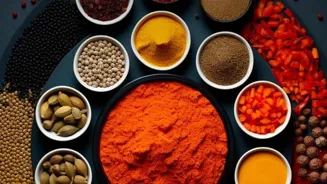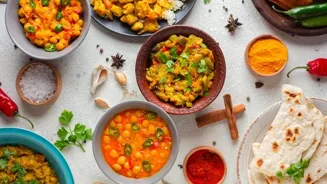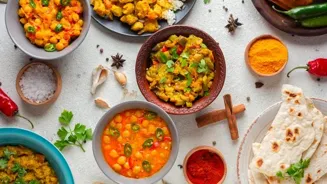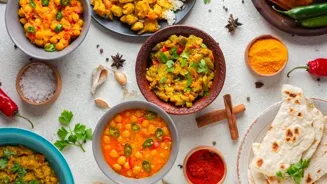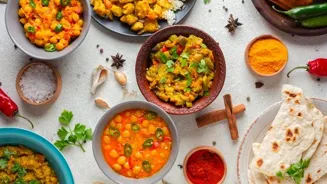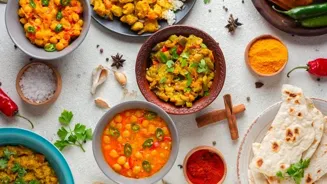Unveil the Magic of Local Indian Ingredients for Exquisite Cooking! Dive into a world of flavors and culinary wonders
Namaste, food lovers! Are you tired of the same old recipes? Do you want to add a zing
to your daal and a pow to your sabzi? Then look no further!
India, with its diverse landscape and rich culinary heritage, is home to a treasure trove of lesser-known ingredients that can transform your cooking from good to absolutely fantastic. Forget expensive imports, we're talking about superfoods grown right here in our own backyard.
Get ready to unlock a whole new world of flavors! We'll explore ten amazing local ingredients, easily available at your nearest market or even your own garden, that promise to elevate your everyday Indian meals.
Get ready to revolutionize your kitchen and impress everyone with your newfound culinary skills. Let’s begin this culinary adventure where we discover hidden gems that will make your dishes not just delicious, but also healthier and truly authentic.
Nutritional power of amaranth & drumstick leaves in cooking
First up, we have the humble but powerful Amaranth leaves, or chaulai as it's commonly known. This leafy green is a nutritional powerhouse packed with iron, calcium, and vitamins. Forget spinach for a day and try adding amaranth leaves to your saag, dals, or even making a delicious chaulai bhaji.
The slightly earthy and nutty flavor adds a unique dimension to your dishes. Next is Drumstick leave. Moringa, as its botanically called, the leaves are packed with vitamins, minerals, and antioxidants.
Add them to your sambar, dal, or even make a simple drumstick leaves sabzi for a nutritional boost. The flavor is slightly bitter, but in the right combination, it can add a lovely zing. Many people ignore this as part of cooking. So, start using it and enjoy it.
These ingredients are easily available at a very feasible fare. You can even request your regular vegetable vendor to start storing for you. This might encourage them to have some local greens that would benefit many.
Discover unique flavors: Gondhoraj Lebu from Bengal & Kachampuli Vinegar from Coorg
Moving on to something that tingles your tastebuds, Gondhoraj Lebu, the king of lemons from Bengal. This fragrant citrus fruit is unlike any other lime you've ever tasted. Its unique aroma, a cross between lime and kaffir lime, can elevate a simple dal or raita to gourmet status.
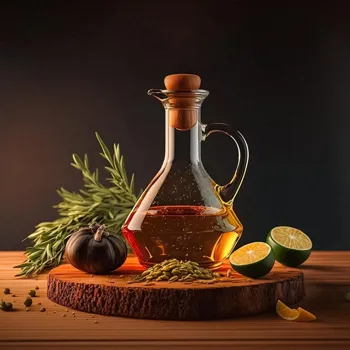
Just a squeeze of Gondhoraj lebu can transform your dish with its zesty and aromatic notes. Though it's specific to Bengal, look out for it in local markets, or ask your Bengali friends to bring some along. Similarly, you should also use Kachampuli Vinegar from Coorg.
Forget your regular vinegar; this dark, smoky vinegar made from the Garcinia gummi-gutta fruit will add a unique and tangy flavor to your curries and stews. It's the secret ingredient behind the distinctive taste of Coorgi pandi curry (pork curry, but this can be used for all vegetables).
Its tangy, sour flavour will make all your veggies tastier. It has a very different profile compared to regular vinegar.
Brahmi leaves and kasuri methi elevate Indian cooking
Let's not forget about the humble Brahmi leaves, also known as Gotu Kola. Often used in Ayurvedic medicine for its cognitive benefits, Brahmi leaves can also be added to your cooking. Add them to your chutneys, salads, or even grind them into a paste to add to your dals and curries.
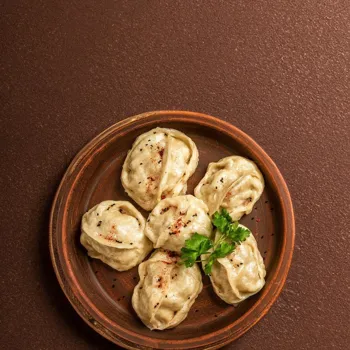
The slightly bitter taste is balanced by its refreshing properties. Furthermore, give a try to Kasuri Methi. While most Indian kitchens have dried fenugreek leaves (kasuri methi), many are unaware of their full potential.
To truly unlock its aromatic glory, roast the kasuri methi lightly on a dry pan before crumbling it over your dishes. This brings out the nutty, slightly bitter flavor that perfectly complements dals, sabzis, and even parathas.
Kasuri methi, should be a regular ingredient for preparing everyday greens, such as spinach and other leafy vegetables. These are readily available in the market.
Radish pods add unique flavor; jackfruit seeds are nutritious
Our next ingredient is Radish pods (Moongre). These are little gems are often discarded, but they pack a peppery, radish-like punch that can add a unique flavor to your sabzis and stews. Sauté them with your vegetables, add them to your salads, or even pickle them for a tangy treat.
They offer a different experience compared to radish. Then, lets have look at jackfruit seeds. Don't throw away those jackfruit seeds! These overlooked treasures are packed with nutrients and have a surprisingly delicious, starchy texture.
Roast them, boil them, or add them to your curries for a hearty and satisfying meal. They taste very similar to chestnuts. They are an excellent source of protein and fiber, making you healthy and strong. Do try it when jackfruit is in season.
Local beans like Cluster and Lima beans add unique flavors to dishes
Now we will talk about some of the local beans. First off is Cluster beans or Gavar.This humble bean is often overlooked, but its unique flavor and slightly crunchy texture can elevate your sabzis to new heights.
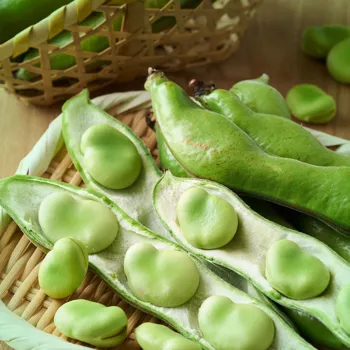
Try making a dry gavar sabzi with spices like turmeric, cumin, and coriander for a simple and satisfying meal. Similarly you can use Lima beans or sem. This flat bean is a staple in many Indian homes, but its versatility is often underestimated.
Add it to your dals, curries, or sabzis for a hearty and nutritious meal. The slightly sweet and earthy flavor pairs well with a variety of spices. Always choose fresh cluster and lima beans when cooking. They are also readily available.
Ambada leaves and Amla are rich in nutrients, enhancing Andhra cuisine
Last but not the least, is Ambada leaves also known as Gongura in Andhra Pradesh, are sour leafy greens with a distinctive tangy flavor. These leaves are a staple in Andhra cuisine, where they are used to make delicious pickles, dals, and curries.
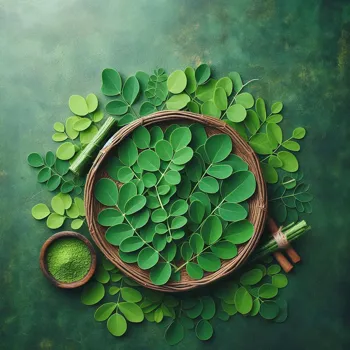
They're rich in iron, vitamins, and antioxidants, making them a healthy and flavorful addition to your diet. Another example is Amla (Indian Gooseberry) This sour and slightly bitter fruit is a powerhouse of Vitamin C and antioxidants.
While often eaten raw or pickled, amla can also be added to curries, chutneys, and even juices for a healthy twist. These herbs from Andhra region are available throughout the year, dried or fresh. You should try to make many variants from them.
AI Generated Content. Glance/InMobi shall have no liability for the content